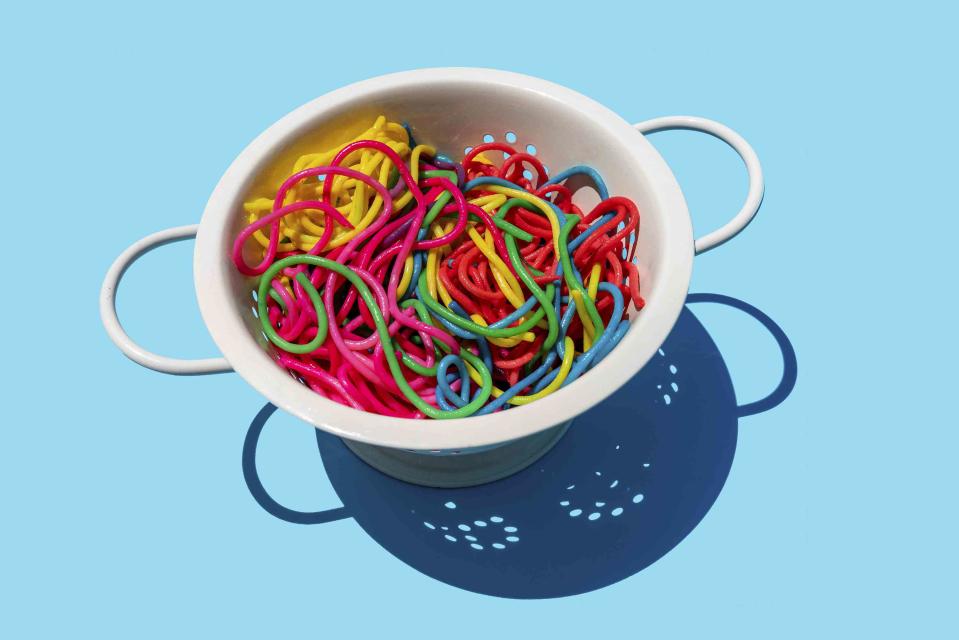8 Pasta Mistakes That Are Ruining Your Meal
Avoid these mistakes for perfect pasta every time.

Westend 61/Getty Images
Whenever we don’t know what to cook, pasta is always the answer. If you have a box of pasta on hand, you have the start of an amazing dinner. Pasta is affordable, filling, and versatile, and you’ll never run out of variations to try. You probably already know the basics of making pasta, but there are some common mistakes that may be keeping you from pasta perfection. Keep reading for eight common pasta mistakes, along with our advice for fixing each one.
Using a pot that’s too small
Pasta expands considerably as it cooks, so it’s important to use a big pot that will accommodate the cooked pasta. Plus, the pasta will cook more evenly if it’s submerged in plenty of water. For one pound of pasta, we recommend boiling four to six quarts of water, remembering that the volume will increase as the pasta cooks.
:
Not salting the cooking water properly
It’s critical to salt the cooking water for flavorful pasta. Some people say that the cooking water should taste like the sea, but we think that’s a little overboard. The cooking water should be well-seasoned, like a delicious broth, but not unpalatable. Around one tablespoon of Diamond Kosher salt per quart of water is a helpful benchmark. To reach your perfect level of saltiness, taste the water as you go (just be careful not to burn your tongue!)
Adding oil to the cooking water
Adding olive oil to the cooking water may sound like a good idea to prevent sticking, but in reality it only causes trouble. The oil doesn’t prevent sticking, but will make the cooked pasta slippery and prevent sauces from coating it well. Trust us: Save your olive oil for better uses!
Breaking the noodles
When you’re cooking long, unwieldy pasta shapes, like spaghetti, it can be tempting to force them into the pot by breaking them. We urge you to resist breaking the noodles in order to preserve their integrity (broken noodles are much harder to twirl around your fork!) and, if you’re superstitious, avoid bad luck. Instead, use a tall pot with lots of water and take your time, gently nudging the pasta into the water as the submerged parts begin to soften and sink. It won’t take long; it just requires a little patience.
:
Not checking the pasta often enough
The cook times listed on pasta boxes are estimates—not rules. We tend to aim for al dente pasta, which is just tender enough, but still with a little bite. For the best results, check the pasta consistently to ensure that it’s cooked exactly to your liking.
Not saving any pasta water
Pasta water is the secret to a beautifully emulsified sauce, so it’s essential to reserve a cup or so before draining the pasta. When pasta water turns cloudy, it means that the pasta is releasing starch into the water. The starchy water will emulsify with fat, like butter or olive oil, to yield a sauce with a silky, thick texture.
Rinsing the pasta
Rinsing the pasta will remove the starchy film that helps the sauce cling to it. If you’re serving the pasta hot, you should never rinse it post-drain. With that said, if you’re planning to serve pasta cold or at room temperature (like in a pasta salad), go ahead and rinse it so it doesn’t clump as it sits.
:
Not considering the combination of pasta shape and sauce
The combination of shape and sauce can play a big role in how the overall dish turns out. For example, you might want a ridged, tubular pasta, like rigatoni, to catch every last bit of a hearty ragù. Alternatively, you might want a long, flat noodle, like linguine, for a light, bright, seafood-forward sauce. Feel free to follow traditional pairings of shape and sauce, or experiment with your own combinations.
For more Real Simple news, make sure to sign up for our newsletter!
Read the original article on Real Simple.

 Yahoo Movies
Yahoo Movies 